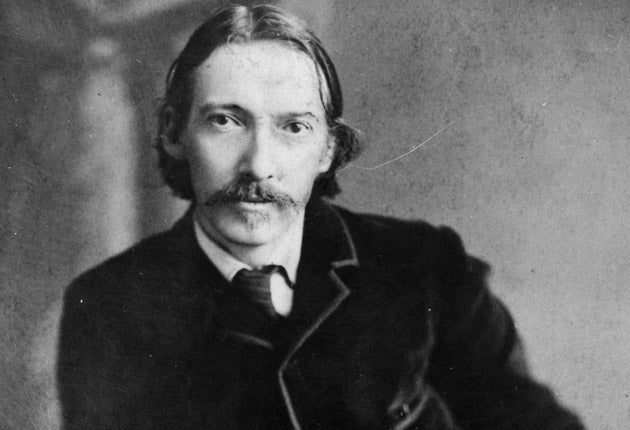Invisible Ink: No 67 - Robert Louis Stevenson

Your support helps us to tell the story
From reproductive rights to climate change to Big Tech, The Independent is on the ground when the story is developing. Whether it's investigating the financials of Elon Musk's pro-Trump PAC or producing our latest documentary, 'The A Word', which shines a light on the American women fighting for reproductive rights, we know how important it is to parse out the facts from the messaging.
At such a critical moment in US history, we need reporters on the ground. Your donation allows us to keep sending journalists to speak to both sides of the story.
The Independent is trusted by Americans across the entire political spectrum. And unlike many other quality news outlets, we choose not to lock Americans out of our reporting and analysis with paywalls. We believe quality journalism should be available to everyone, paid for by those who can afford it.
Your support makes all the difference.Yes, we know you had a tattered copy of Treasure Island in your schoolbag when you were 10, you're aware of Kidnapped and The Strange Case of Dr Jekyll and Mr Hyde, but did you know that the best part of Robert Louis Stevenson's career is now the least remembered?
The range and complexity of his short fiction is extraordinary. Although he is known for the graceful construction of his plots, he was also a champion of literary style throughout his life. As a child, one of Stevenson's favourite books had been the Arabian Nights, so he wrote the New Arabian Nights (1882), which featured two interlinking sets of tales, "The Suicide Club" and "The Rajah's Diamond". In them, the dashing Prince Florizel and his sidekick Colonel Geraldine leave their Rupert Street abode and hop into hansoms, setting off on nocturnal adventures involving secret societies and sinister plots to overthrow order.
You can trace this macabre strand of Stevenson's writing to his reckless student life in Edinburgh, which brings us to the Conan Doyle question: why is Sherlock Holmes so ubiquitous while Stevenson's hero is forgotten? Well, there's the matter of quantity. After all, we have 56 Sherlock stories and four novels from Conan Doyle. But we even tend to recall Stevenson's better-known tales wrongly. Mr Hyde, for example, is no physical monster but rather has the spiritual malignance of Dorian Gray, and the antidote he needs lies in the warmth of human relationships.
Stevenson cherished lasting friendships and found in them the solution to most human malaises. The characters in his darker tales, such as those in "Markheim" and "Thrawn Janet", are lonely and loveless. His later exotic fables were inspired by his South Seas travels, and "The Bottle Imp" is the best genie story ever, partly because of the dilemma the bottle imposes on an owner, for it must be sold on for less than was paid for it.
Stevenson's stories may have been overlooked by modern readers, but not by other authors. His influence can be seen in the works of Kipling, Hemingway, Nabokov, J M Barrie, Arthur Machen and G K Chesterton. He was a literary superstar in his short lifetime, but it didn't guarantee immortality for what is some of his best work. Tartarus Press reissued The Suicide Club & Other Dark Adventures in a handsome hardback in 2004, although unhappily this edition is now out of print.
Join our commenting forum
Join thought-provoking conversations, follow other Independent readers and see their replies
Comments